It seems we can’t find what you’re looking for. Perhaps searching can help.
Sign Up for newsletter!
Subscribe to get the latest eBook!
Hotline






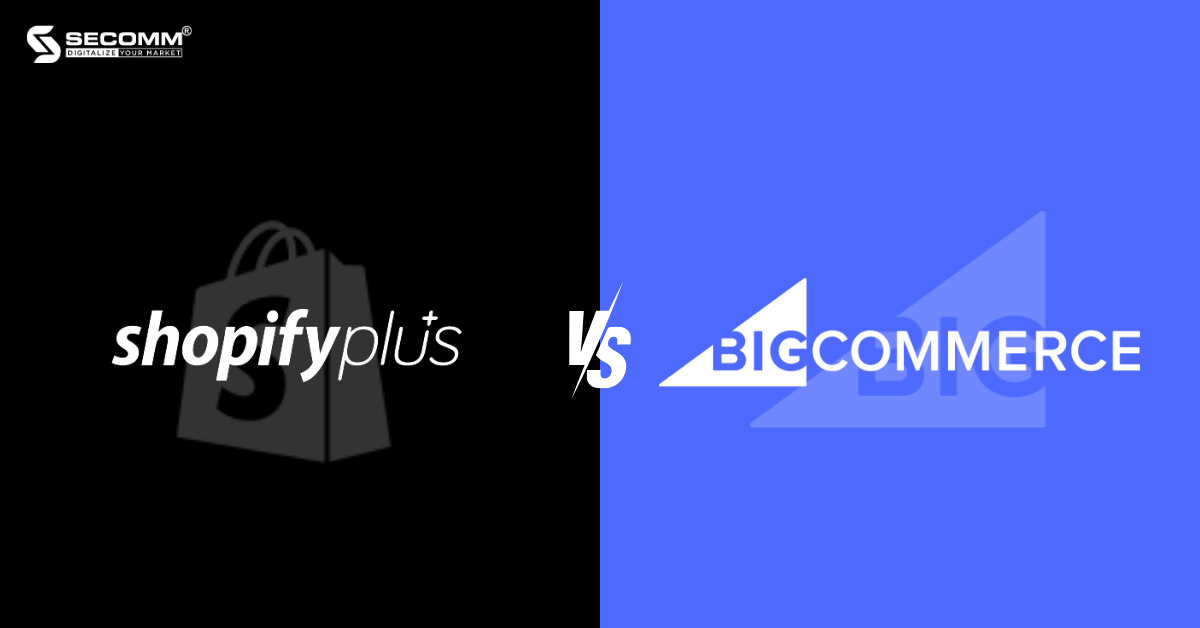
In today’s eCommerce landscape, it isn’t just open-source platforms that can meet the complex development and customization needs of large-scale enterprises, but SaaS platforms are also steadily rising with significant improvements. Among them, two SaaS platforms designed specifically for large enterprises are Shopify Plus and BigCommerce Enterprise.
However, these two platforms have many key differences. This article aims to clarify the pros and cons of each platform and compare the differences between the two platforms to help you — as a business leader — make well-informed decisions.
Learn more: Shopify vs BigCommerce: Which platform is right for you?
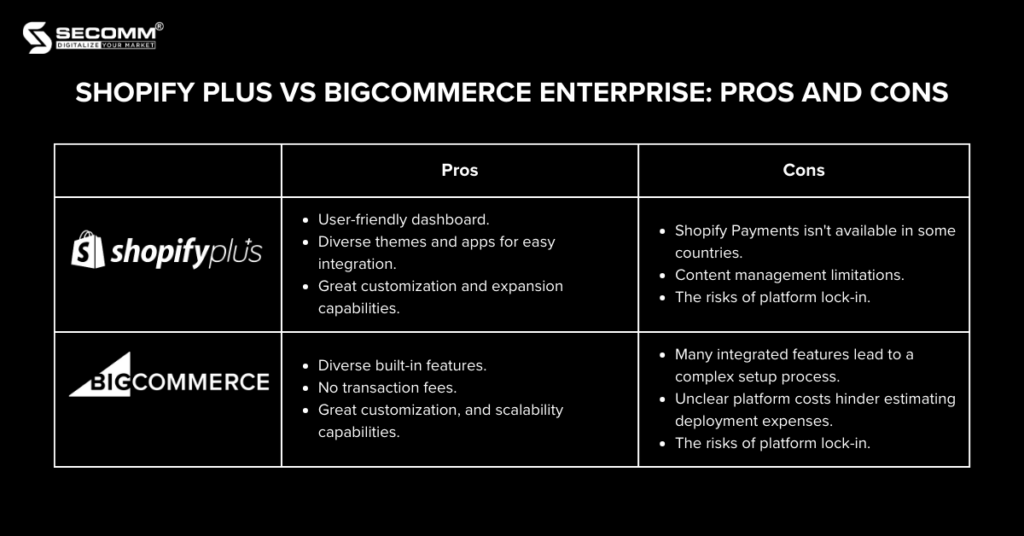
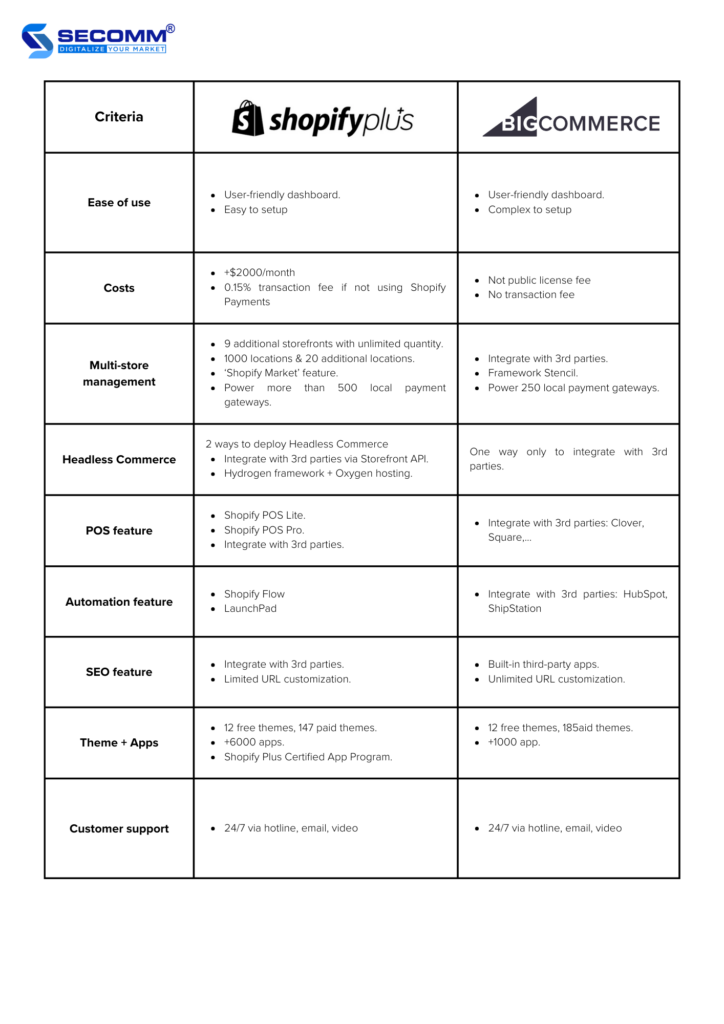
Both platforms are recognized for their user-friendliness compared to open-source platforms. Their intuitive dashboard and user-friendly navigation, along with features like drag-and-drop editing, extensive documentation, and 24/7 support, make them accessible for users of varying technical expertise.
However, Shopify, known for its inherent user-friendly design, ensures that users, whether using the Plus version or the regular ones, can easily explore and set up their eCommerce website with efficiency.
Both these two premium solution platforms — which are Shopify Plus and BigCommerce Enterprise — cater to the deployment needs of large enterprises, these platforms offer advanced features and technologies that require some learning.
For example, the ‘Plus’ users need to grasp the Liquid template language, while those opting for the ‘Enterprise’ may benefit from understanding the Google Cloud Platform for optimizing website performance.
BigCommerce, renowned for its built-in features, continues this trend with the ‘Enterprise’ version. Some features may suit specific businesses but might be unnecessary for others. While BigCommerce allows flexibility for customizing and configuring these advanced features, it can introduce complexity and intricacy into the setup process.
Similarly to other premium solutions on SaaS platforms, the license fee will depend on the deployment requirements and the current scale of the business. BigCommerce doesn’t disclose the fee publicly, requiring businesses to directly contact the platform for tailored consultation and pricing.
On the other hand, Shopify Plus has a license fee starting at $2000 per month. Once you reach a monthly revenue threshold of $800,000, the platform fee becomes revenue-based, amounting to 0.25% of monthly revenue, capped at $40,000 per month or $480,000 per year.
Considering transaction fees is also important. While BigCommerce doesn’t charge transaction fees, Shopify Plus charges a 0.15% transaction fee for not using Shopify Payments.
To estimate deployment costs effectively, you should partner with development agencies and engage in detailed consultations with BigCommerce or Shopify for comprehensive guidance.
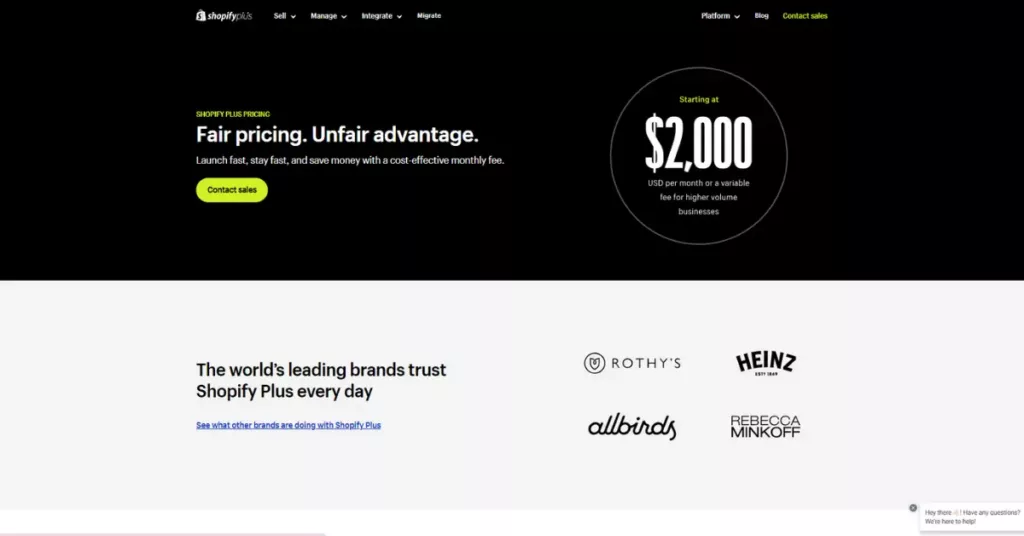
For large enterprises, the multi-store management feature is crucial and a primary consideration when selecting an eCommerce platform to sell globally. To engage in sales across various markets worldwide, your eCommerce website needs to be crafted to suit the preferences of each target audience in different markets.
This involves addressing issues related to language conversion, currency units, and payment methods with flexibility. Moreover, stores should be administered efficiently in a centralized manner rather than separately.
Shopify Plus allows you to create up to 9 additional storefronts alongside the main storefront at 1000 different inventory locations and 20 additional inventory locations. All these storefronts can be centrally managed through a single dashboard.
Plus, the Shopify Market feature will help you select the markets you want to sell in. The system will then automatically convert and manage multiple languages, currency units, shipping options, and payment methods based on the user’s IP address. Currently, Shopify Plus supports a range of local payment gateways, and you can refer to the provided list.

BigCommerce Enterprise doesn’t provide many solutions or features for global selling. Instead, it allows you to deploy multiple stores within the platform and then integrate with 3rd-party PIM solutions to manage data across these stores.
Another option is to leverage the BigCommerce Stencil framework to tailor content language for each local market. Also, the Enterprise version supports multi-currency payments through more than 250 local payment gateways.
The demand for adopting Headless eCommerce is on the rise, especially among large enterprises seeking to deliver a seamless and optimized experience for their customers. Both Shopify Plus and BigCommerce Enterprise offer effective solutions for going Headless.
BigCommerce Enterprise allows you to integrate with various frameworks (Next.js, Gatsby.js, Nuxt.js), APIs (REST, GraphQL), and your preferred or previously used tools.
When using Shopify Plus, there are three approaches. You can use the Storefront API to connect and develop with your preferred frameworks, hosting solutions, and tools. Or, you can leverage Shopify Hydrogen framework and Oxygen hosting to facilitate a headless eCommerce website flexibly.
Just like their regular pricing plans, both the ‘Enterprise’ and the ‘Plus’ include Point of Sale (POS) features for eCommerce transactions, catering to both online and offline stores, as well as Omnichannel operations.
POS can be configured on various devices like mobile devices (tablets, smartphones), and other hardware like cash registers and barcode scanners.
BigCommerce Enterprise offers smooth integration with third-party POS systems like Square, Vend, Clover, and Heartland Retail. It’s good for those who already using POS software from these third-party providers.
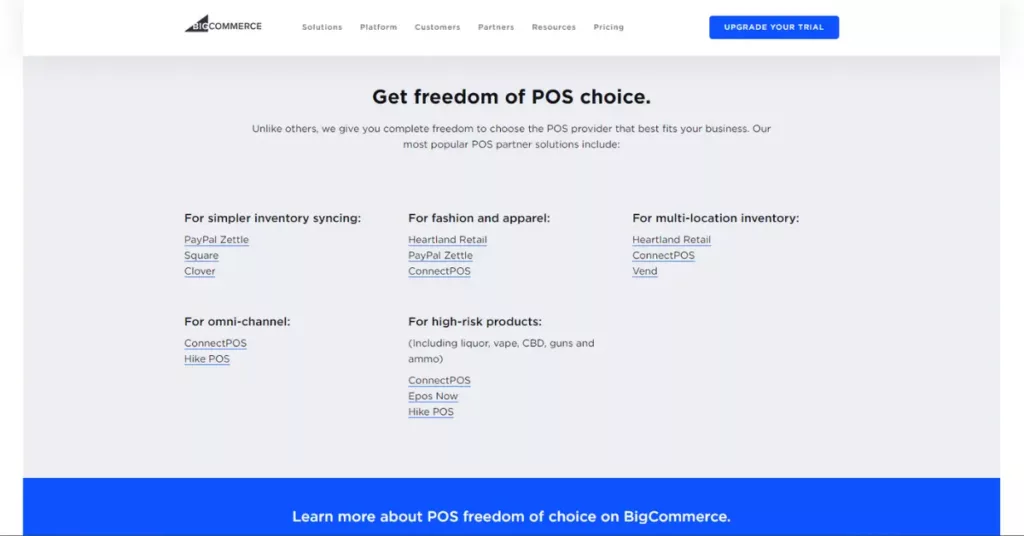
For Shopify Plus, beyond the option to integrate with third-party POS systems like BigCommerce Enterprise (Clover, Square, Zend), Shopify offers its own Shopify POS solution, available in two plans:
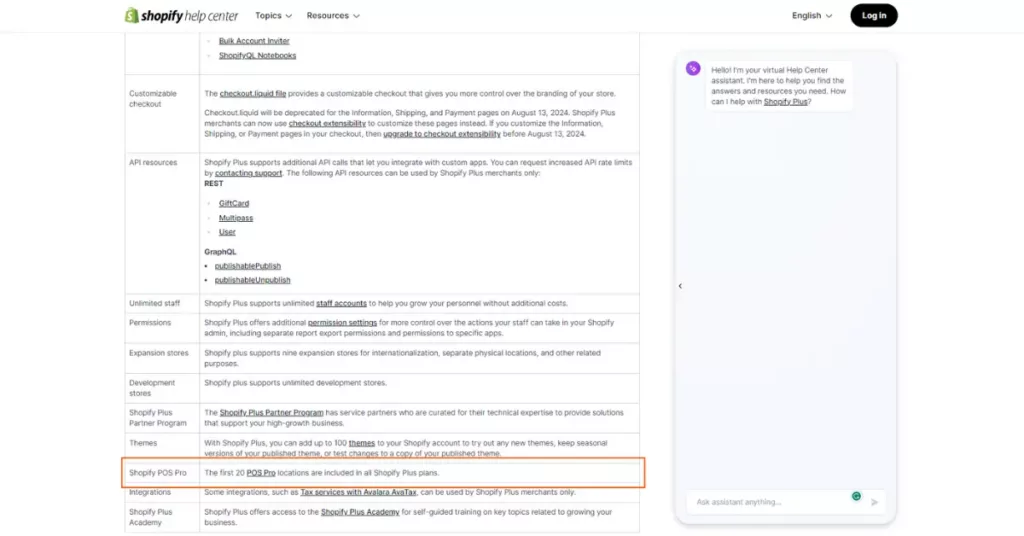
Both ‘Plus’ and ‘Enterprise’ offer tools and solutions to help you automate your eCommerce website operations.
Shopify Plus offers an exclusive solution, Shopify Flow, and LaunchPad, allowing you to automate routine tasks and set up automated workflows for tasks like email marketing campaigns or new product launches.
On the other hand, BigCommerce Enterprise takes a different automation approach which enables you to smoothly integrate with 3rd-party apps. Some of them are HubSpot, Avalara, ShipStation, etc.
SEO plays a crucial role in improving the search visibility of an eCommerce site and attracting potential customers. Both platforms offer features to enhance SEO efforts.
The ‘Plus’ stands out for its user-friendly interface and an integrated app ecosystem that can enhance SEO, incorporating tools such as Google Search Console and Analytics. However, it comes with limitations in URL control and customization.
The ‘Enterprise’, on the other hand, provides more versatile SEO capabilities, including complete control over URLs and integration with applications like Google Search Console and Analytics. It makes the process more intricate compared to Shopify Plus, involving additional setup operations.
Shopify Plus offers businesses approximately 12 free themes and 147 paid themes, with prices ranging from $150 to $380 per theme. On the other hand, BigCommerce Enterprise provides around 12 free themes and 185 paid themes, with prices ranging from $150 to $400 per theme.
Both platforms offer a wide range of visually appealing and mobile-friendly theme options. While the ‘Enterprise’ themes are characterized by elegant, tidy, and modern designs with highly customizable features, the ‘Plus’ themes can meet higher requirements for user experience, making navigation easier.

To facilitate efficient eCommerce deployment, the two provide vast app stores and extensions, tailored for ‘Plus’ and ‘Enterprise’ businesses. While both platforms offer free versions, access to comprehensive features requires a modest monthly fee.
Shopify Plus boasts over 6,000 apps and extensions, while BigCommerce Enterprise has around 1,000. This can be explained by Shopify’s widespread popularity among businesses and developers globally, providing them with ample documentation and resources for app and extension development, including the Shopify Plus Certified App Program.
For businesses that are ready to deploy the ‘Plus’ or the ‘Enterprise’ solutions, the demand for technical support and efficient eCommerce website operations is significant.
Both platforms receive high praise for their customer service. They offer 24/7 support via hotline, email, and video available in multiple languages. However, if you need specialized and complex technical support, Shopify Plus may be the preferable choice.
Final Thoughts
In the competitive business landscape, selecting the right platform for launching an eCommerce website is an important decision. Both Shopify Plus and BigCommerce Enterprise offer distinct advantages and cater to various business models.
Regardless of the platform chosen, you should prioritize the development and delivery of an exceptional shopping experience for your customers. eCommerce platforms serve as tools, and the ultimate key to success lies in an effective deployment strategy and great collaboration with a proficient team.
With extensive experience helping numerous businesses deploy diverse eCommerce development projects on both Shopify Plus and BigCommerce Enterprise, SECOMM boasts a team of seasoned experts capable of collaborating to create exceptional eCommerce experiences and help you enhance your brand positioning.
Reach out or directly call the hotline at 028 7108 9908 to explore how SECOMM can contribute to optimizing the potential of Shopify Plus and BigCommerce Enterprise for enduring your business success.
 2
2
 6,754
6,754
 0
0
 1
1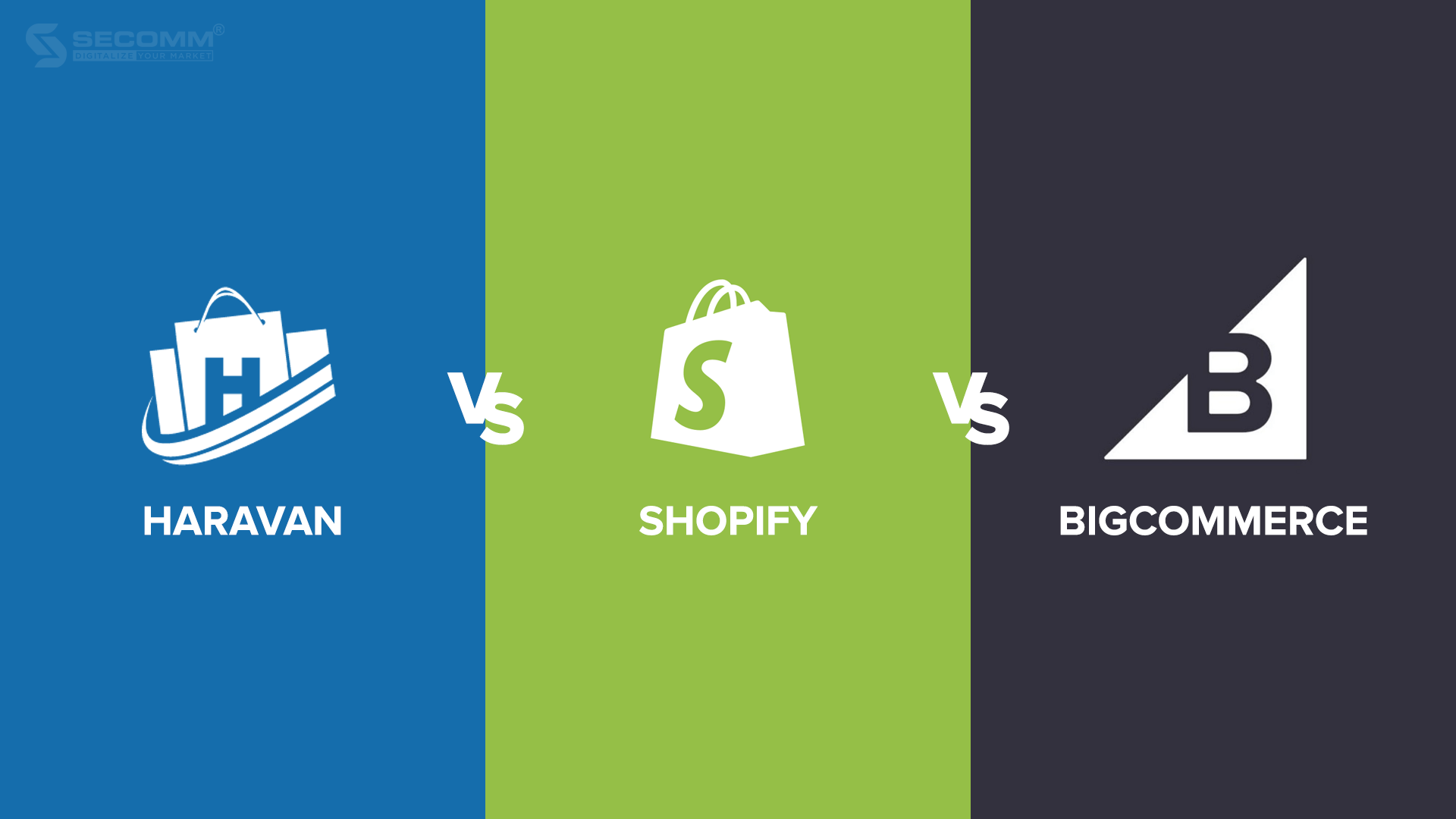
Many firms have selected SaaS eCommerce platforms to create e-commerce enterprises for brands because of their essential qualities, which can rapidly install eCommerce at a low cost.
In Vietnam, Haravan is the most popular eCommerce platform that allows multi-channel sales. This platform was officially launched in 2014, aims to assist companies in developing professional e-commerce websites at an affordable cost.
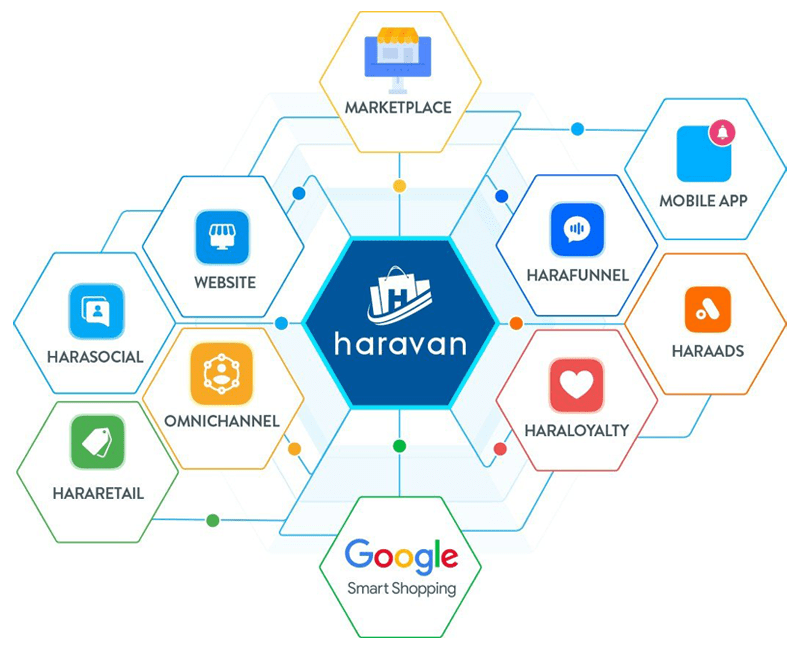
Haravan provides many UI/UX themes so that firms may select a design that suits the brand’s image. At the same time, many organizations regard the admin interface to be easy to use. However, companies must pay additional fees to raise the number of admin accounts.
Haravan’s essential features, on the other hand, are just enough for businesses to run their web operations successfully but not ideal sufficient for long-term development. In addition, because Haravan is a SaaS platform, organizations find it difficult to customize or expand functionality outside of its ecosystem.
Haravan’s drag-and-drop manipulation allows companies to create an eCommerce website with all the critical functionality for business online in around 30 minutes.
Businesses must pay a monthly charge ranging from 200,000 VND to 3,000,000 VND based on their demands:
Haravan is now gaining popularity in the Vietnamese eCommerce business, particularly in the B2C model or low-involvement product business, due to its ability to deploy with affordable charges swiftly. Vinamilk, Juno, and L’Oréal are some companies that use Haravan.
Shopify is a software-as-a-service platform for online retailers and point-of-sale systems. Shopify is popular among the eCommerce community due to its simplicity, quick development timelines, and low setup expenses.

Shopify provides many attractive themes that are device-agnostic and ideal for a broad array of industries. Shopify’s admin dashboard is simple to use, and it offers a Vietnamese version for Vietnamese firms. Like Haravan, firms must upgrade their service packs to expand the number of admin accounts.
Depending on the system’s complexity, each business will need some time to get used to Shopify. Still, in general, it will not take long for companies to establish a website, taking between 1 and 2 days on average.
Shopify has created a variety of packs for companies to choose from:
Shopify also creates different service bundles to meet a range of organizations:
Shopify is constantly developing and enhancing its offerings to meet a wide range of customer requests rapidly and effectively, making it perfect for B2C enterprises. However, the monthly cost is a significant impediment because firms must pay significantly more to use extra functions. Sony Vietnam, Vsmart, and DHC Vietnam are some Vietnamese companies that use Shopify.
BigCommerce is a SaaS platform that launched in 2009 and has made a significant impact on the eCommerce developer community. Despite being founded later than other platforms, BigCommerce does not fall behind in terms of a functional system, theme store, and so all.

BigCommerce provides a wide range of visually appealing themes and adapts to customer behavior, including 12 free versions and over 160 professional ones. BigCommerce’s admin dashboard is easy to use, and it supports businesses in rapidly setting up eCommerce websites. However, since BigCommerce does not offer a Vietnamese version, firms must hire and train English-qualified employees to manage the site.
BigCommerce’ packages are jam-packed with features and add-ons to help businesses achieve solid internet business. However, BigCommerce’s capacity to customize and expand functionalities remains limited, restricting firms from adapting to their needs to deal with industry-specific difficulties.
Thanks to its drag-and-drop page builder feature, the time it takes to establish a website on BigCommerce is shortish. BigCommerce construction process takes about 1-2 days on average.
BigCommerce now supports three package options and one on-demand solution:
Moreover, BigCommerce will charge you additional fees based on your online sales.
Overall, BigCommerce is not inferior to Haravan or Shopify in every way; nevertheless, the central issue right now is that this platform does not support Vietnamese enterprises.
Inheriting the advantages of a SaaS eCommerce platform, all three platforms are easy to use, with various themes and functions for quick construction at a reasonable cost.
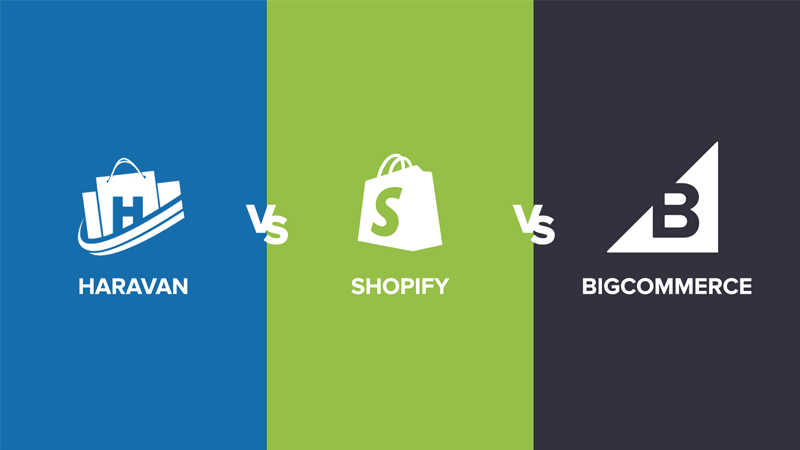
Businesses that solely conduct business in Vietnam may choose to use Haravan to take advantage of cost-competitive benefits and functionalities tailored to suit Vietnamese shopping habits. Shopify and BigCommerce are options to explore if you want to develop your business worldwide. Simultaneously, Shopify is ranked higher for providing great 24/7 live chat support, which will aid companies in addressing difficulties as quickly as possible. As a consequence, Shopify will be ideal for large-scale and high-volume enterprises. BigCommerce, on the other hand, compresses functionality into more affordable solutions and is not restricted to the number of administrators like Shopify, making it suitable for small or medium-sized businesses.
However, using SaaS eCommerce platforms like Haravan, Shopify, and BigCommerce in the long term would result in the following deficiencies:
SECOMM has significant experience developing complicated eCommerce websites in different countries, and we know the challenges that businesses face when selecting and implementing an e-commerce platform.
Contact SECOMM for a free consultation on eCommerce website development!
 2
2
 6,195
6,195
 0
0
 1
1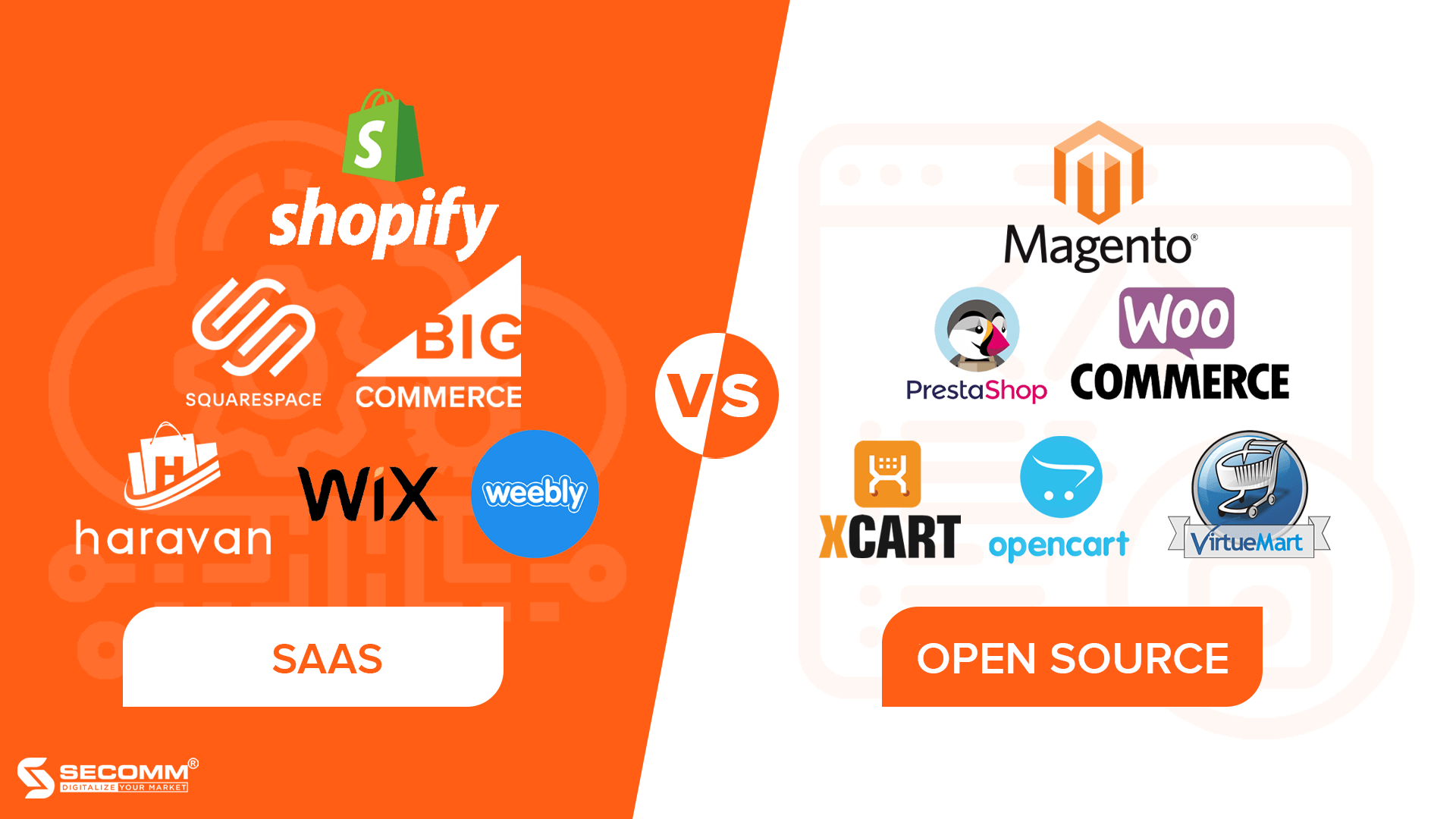
A SaaS eCommerce Platform is a service delivery paradigm for developing a software-based website system. Data is kept on the provider’s server system under this approach, and that platform is in charge of dealing with technical concerns for the business.
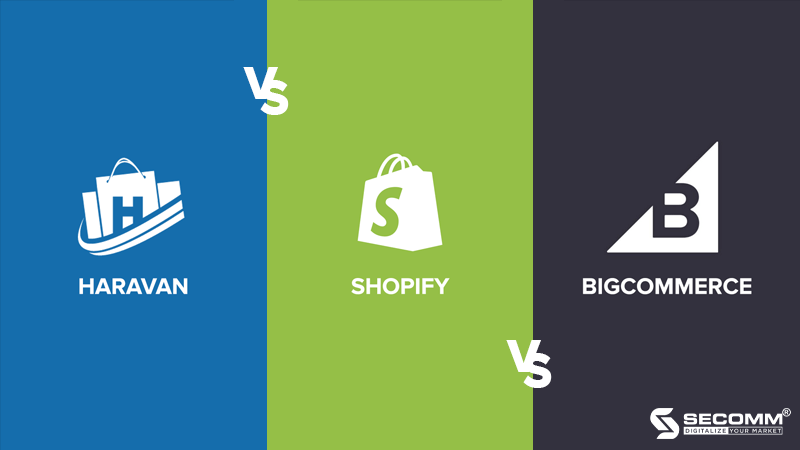
The provider pre-designs the SaaS platform for the full system, from hosting, interface, and features to technological infrastructure maintenance. As a result, organizations can quickly create and manage a website system without worrying about technological concerns.
Furthermore, the platform developer offers firms 24/7 assistance through live chat, desk help, or a hotline while the platform is in operation.
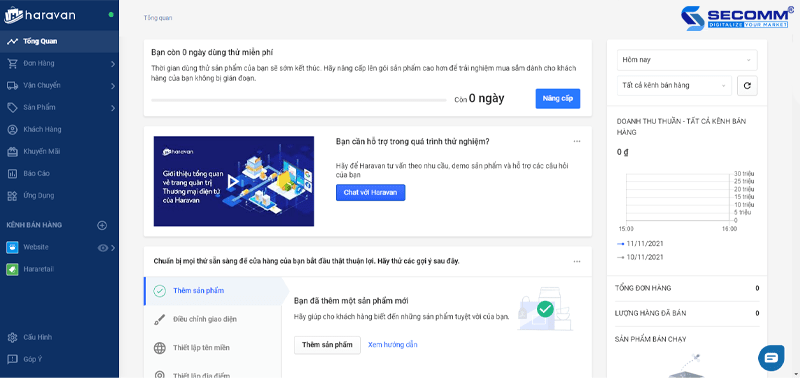
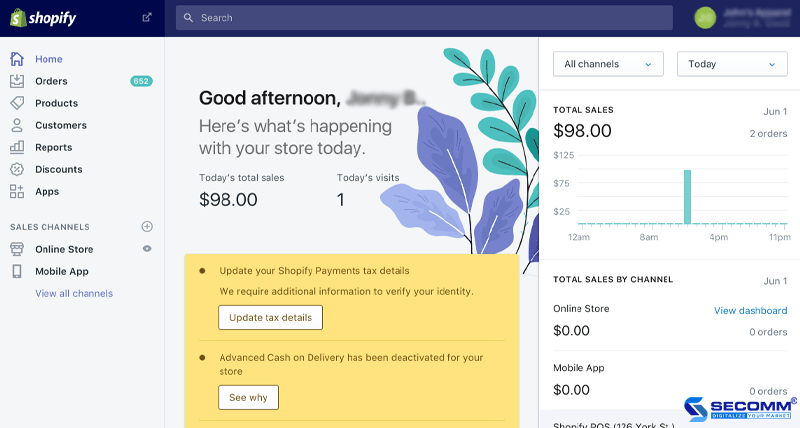
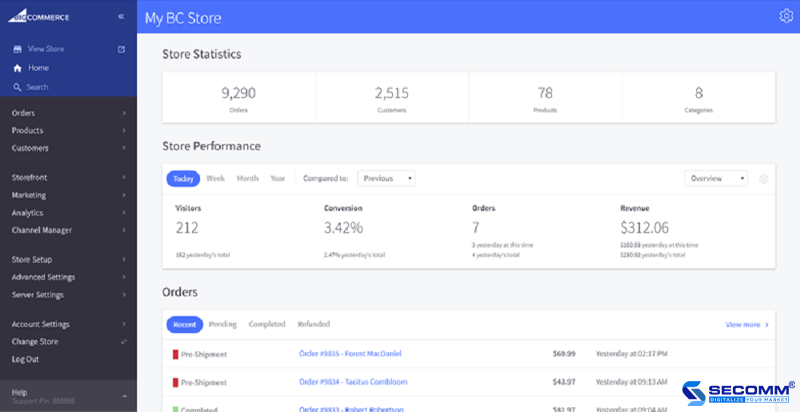
The SaaS eCommerce Platform includes a multitude of functionality and appealing UX/UI interfaces, making it suitable for a variety of businesses.
Furthermore, these platforms include a wide range of essential eCommerce functions, including product administration, order management, customer management, marketing, business analysis, and reporting to let firms quickly develop an e-commerce website. Moreover, extensions such as Omni-channel, Affiliate Marketing, E-Payment, E-Logistic, and so on are constantly added to these platforms to strengthen the e-commerce system.
The time it takes to establish a website on a SaaS eCommerce Platform is quite fast, ranging from 1 to 7 days on average, depending on the website’s setup.
The initial building cost is pretty cheap because firms would pay monthly or yearly use fees (subscription-based) to establish a website using SaaS eCommerce Platforms, such as:
Aside from the monthly/yearly licensing charge, businesses must pay extra expenditures such as interface fees, new features, expanding the number of backend users, and POS (Point of Sale) to grow the eCommerce system.
Because the enterprise’s whole website system is housed on the provider’s server, ownership and control of the website source code will belong to that platform, not the firm. Businesses who transfer platforms can no longer utilize the previous site source code and must rebuild from scratch on the new platform. Moreover, data loss or misalignment is usually unavoidable.
The enterprise’s data, like the source code, is likewise kept on the provider’s server, thus ownership and control over the data remains constrained. There are many difficulties for not owning and controlling data, such as linking data between departments, customizing users, and so on.
Because the website system depends on the SaaS platform, customization and expansion are currently limited. When it comes to upgrading existing features, developing new functions for the company’s development, in line with the particular requirements of the product and industry, and optimizing the user experience, SaaS platforms are frequently unable to adapt. As a result, switching platforms after a period of usage is unavoidable, and of course, this change will take significant time and money for the company.
Because you must pay monthly or yearly license fees, the longer you use the higher the overall cost of use. Furthermore, the SaaS eCommerce Platform charges on the revenue online sales.
For example, various Shopify apps, such as DCart (Create Discount Codes on Cart), OctaneAI (Similar Product Suggestions), Ali Reviews (Product Reviews), and others, would charge a monthly fee, average $10 /month/features. The more applications that are installed, the more the monthly or yearly expenses will be.
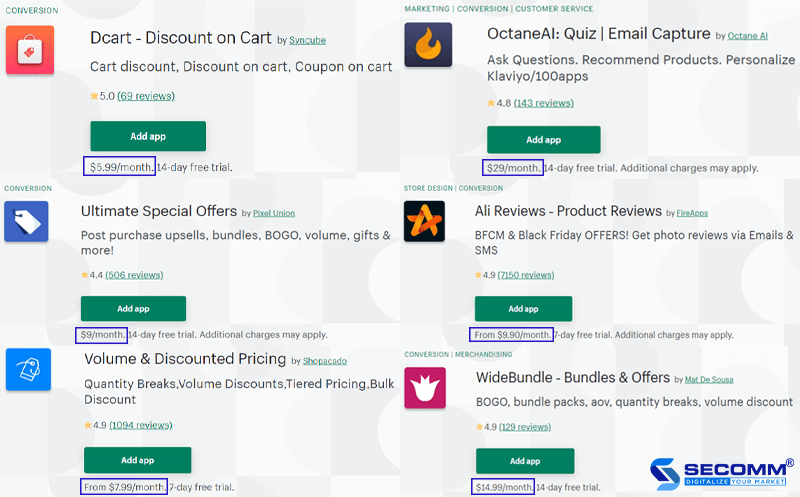
Businesses can use the SaaS platform if they wish to enter the e-commerce industry rapidly, have minimal need for customization, and do not need to enhance the system. As a result, SaaS systems are frequently selected by startups, SMEs (small and medium enterprises), and businesses just getting started in the e-commerce industry.
Open Source is software whose source code is publicly available and freely used by anyone.
Because the data and source code will be housed on a separate server system, Open Source eCommerce Platforms have the opposite aspects of SaaS platforms. Businesses that use open source platforms must collaborate with professional website developers or build a highly specialized in-house team for the website system to achieve maximum efficiency.
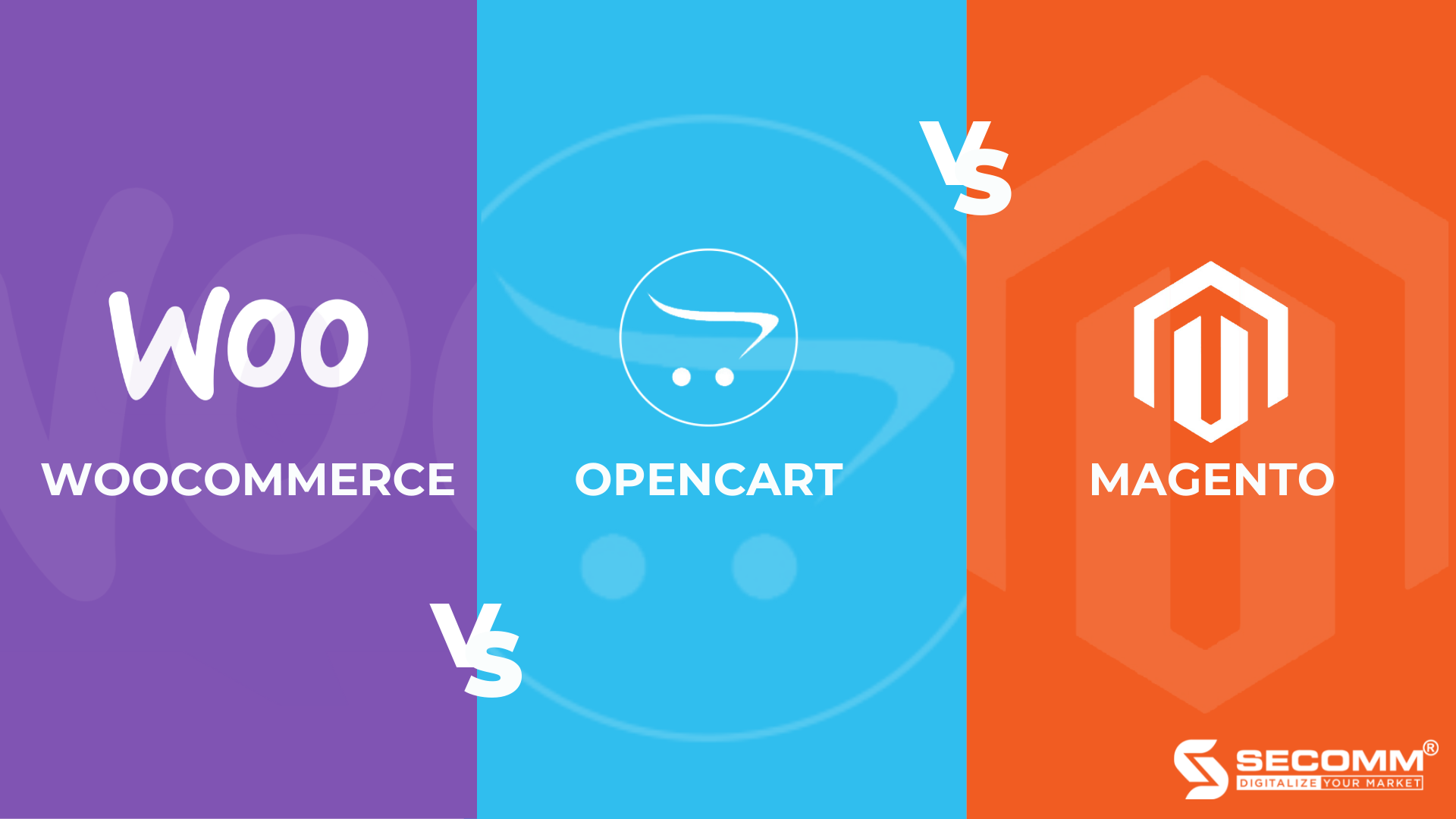
Businesses have complete ownership and control over the source code and data on the system due to the characteristic of being housed on a separate server system. As a consequence, while deploying an eCommerce website, companies only need to pay development expenses in order to utilize the source code, rather than monthly/yearly license fees just like SaaS platforms. At this point, you could reuse the previous source code if you change developers or platforms. Furthermore, security is improved, reducing hacker attacks, server failures, and technical faults from staff and consumers.
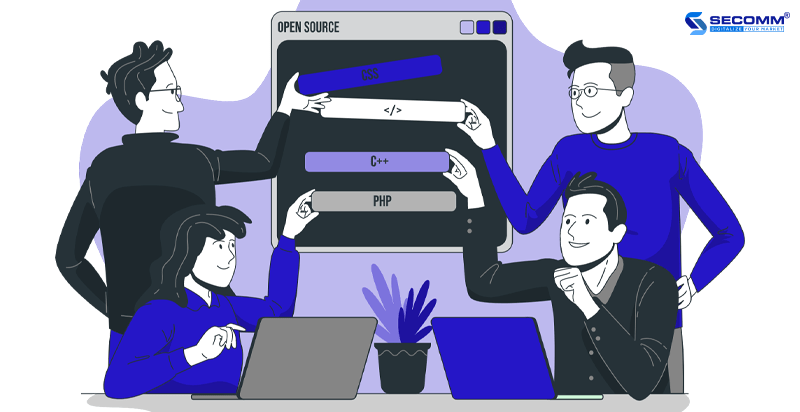
Businesses have more choices in developing their website’s interface to boost brand image and maximize revenue since they use Open Source eCommerce Platforms.
Currently, there are three methods for designing interfaces:
In terms of website system features, Open Source eCommerce Platforms are quite superior to SaaS platforms. Not only have basic functions, but Open Source eCommerce Platforms also have many advanced features such as quick search, similar product suggestions, abandoned cart notifications, real-time products, and so on.
In addition, the Open Source eCommerce Platforms also has many add-ons that are improved, provided, and shared by the developer community.
Because organizations control their own source code, they can simply update the functional system, build new features, or expand the system to suit business demands and meet consumer needs. At the same time, the open-source code’s flexibility allows businesses to easily link with third-party utilities in order to run the system.
It is hard to build “tailor-made” systems for each firm with a system of various e-commerce features ranging from basic to complex, therefore systems developed on open source e-commerce platforms frequently have high accuracy. As a result, in order to build and function efficiently, a specialized team or development organization must have strong knowledge and several years of experience.
Deployment times for open source e-commerce platforms are frequently lengthier than those for SaaS platforms. Depending on the complexity of the functional system, the average amount of time for the IT team to build a website varies from 3 months to 1 year.
Using an open-source platform is basically free, but having a full e-commerce system from website to mobile app needs a significant commitment of your own labor. The in-house IT team will design interfaces and functions. As a result, the initial cost of developing an e-commerce website using an open-source platform is pretty expensive, an average of $10,000 per project.
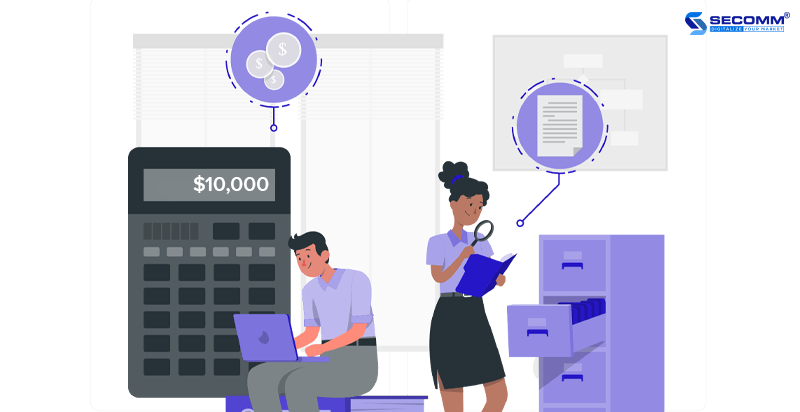
The Open Source eCommerce Platform is suited for all sorts of enterprises due to its numerous features. However, budget and implementation time restrictions have kept many small and medium-sized businesses from utilizing it. Large firms frequently engage in these platforms to construct specialized and specialized eCommerce systems.
In general, the decision of which eCommerce platform to select will be determined by each firm’s business plan, budget, and time of eCommerce development.
 2
2
 6,763
6,763
 0
0
 1
1Subscribe to get the latest eBook!
Hotline